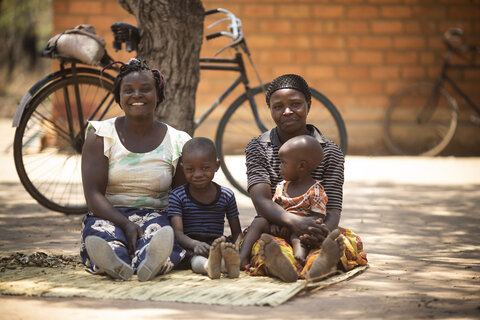Areas eligible for SMC and areas where SMC is implemented in 2020

|
Nigeria (2021 SMC season) |
# of children targeted |
# of children reached |
Coverage |
|
Cycle 1 |
21,533,310 |
23,090,242 |
107% |
|
Cycle 2 |
21,533,310 |
24,302,647 |
113% |
|
Cycle 3 |
21,533,310 |
25,758,291 |
120% |
|
Cycle 4 |
21533310 |
21593632 |
100% |
|
Cycle 5 |
1307160 |
1258185 |
96% |
Data from the NMCP of Nigeria
Monitoring of coverage completeness

Monitoring of coverage
- Lot Quantity Assurance Survey (LQAS) is carried to monitor the first three cycles. This is done at the end of each cycle. The key performance indicator is the proportion of eligible children treated with SMC among the total number of eligible children
- An end of round coverage survey is done after the end of the 4th cycle and asks questions after the treatment of eligible child in the fourth and third cycle
Monitoring for compliance
- Monitored through the LQAS and end of year coverage survey. The key indicator is the percentage of children who received the 2nd and 3rd doses on respective survey
Evaluating efficacy
- The current approach to monitoring SMC effectiveness is the use of routine health records on malaria indicators
- Comparison between SMC intervention sites and propensity-matched control sites
- Comparison of malaria indicators pre- post SMC intervention
Successes, opportunities, challenges and solutions in the 2020 SMC season
Successes
- The 2021 implementation scaled up and delivered SPAQ in 18 out of 21 states reaching over 23 million eligible children
- Strategic and targeted engagement led to budgetary releases and financial contributions by states government
- Conducted pilot on the use of ICT4D in deployment of SPAQ administration in 1 state which improved accountability of SPAQ
- There was process evaluation on the integration of ITN with SMC with some possible areas of integration identified
- The use of video demo developed by international helped better understanding during trainings
Way forward
- Ensure delivery in 2022 implementation to all 21 SMC eligible states
- Improved targeted advocacies and engagements at all levels
- Plans concluded to scale up use of ICT4D in additional states
- There are plans to conduct integration in 2 states which timelines of ITN and SMC coincides
- Ensure widespread use of video demo in the implementation of 2022
Challenges
- Inadequacy of SPAQ in cycle-4 experienced in few states due to actual exceeding the planned
- Two eligible states could not implement due to lack of funds to support implementation
- Escalating security situation leading to migration affecting planning
- Inadequate ACT and RDT for managing referred cases in some instances
Proposed solutions
- The need to strictly adhere to the microplan figures in the implementation of 2022
- Advocating and soliciting support from government and donor organization to fill gaps in 2022
- Strengthen collaboration with security agencies and work with locals in affected areas
- Explore support from state and implementing partners to supply and redistribute ACT and RDT where necessary
Research priorities
- Co-implementation of long lasting insecticide treated nets (LLIN) Distribution with seasonal malaria chemoprevention (SMC) delivery in a Northern Nigerian State
- Optimization of SMC coverage 2020-2023
Partners
- Philanthropic funding through Malaria Consortium
- European and Developing Countries Clinical Trials Partnership
- BMGF